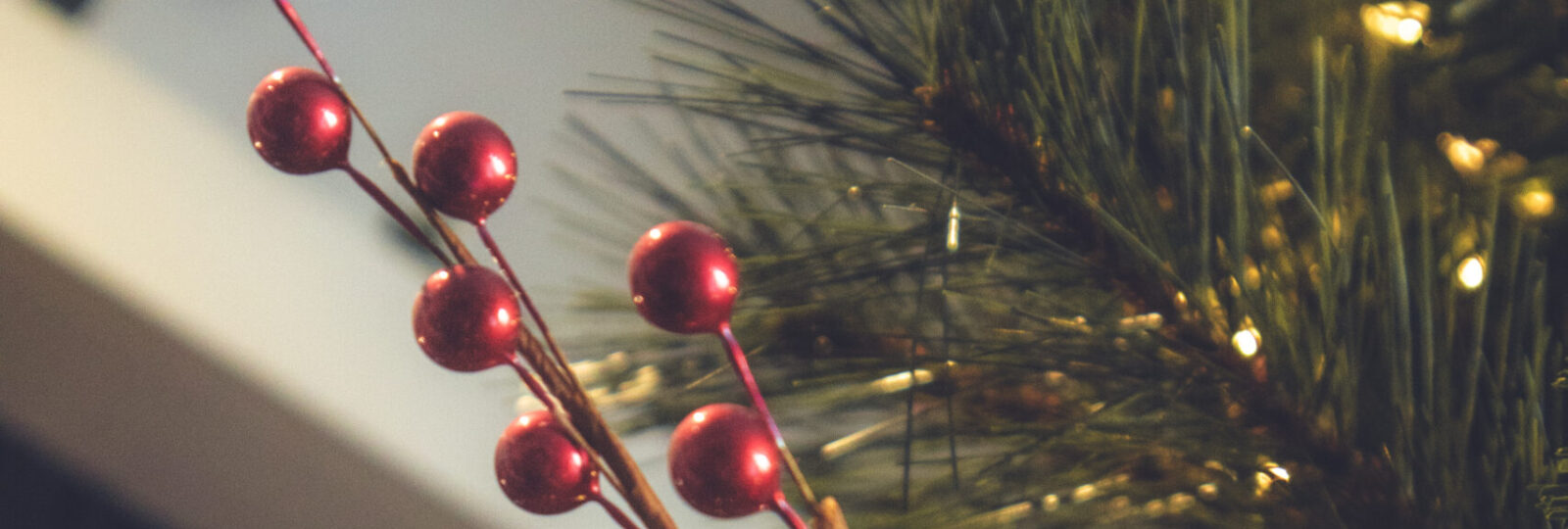History of Christmas Decor
Share this story

The history of Christmas holiday decor has a long intertwined past, cultivating a mix of iconic images some people still associate with the festivities to this day.
A prominent example of the long-ranging past of Christmas iconography is the history of Christmas trees. The beloved pine tree tradition has historic origins in Ancient Egypt and Northern European Celtic religions. Long before Christianity adopted the image of the Christmas tree, it was used as a symbol of overcoming the long winter months of sickness and death, as well as giving thanks for the harvest of the previous seasons and spring harvests in their future.
As stated in History.com’s article History of Christmas trees, “Many ancient people believed that the sun was a god and that winter came every year because the sun god had become sick and weak. They celebrated the solstice because it meant that at last, the sun god would begin to get well. Evergreen boughs reminded them of all the green plants that would grow again when the sun god was strong”
The ancient Egyptians also worshipped a similar god called Ra. Who had the head of a hawk and wore the sun as his crown. During the winter solstice, the Egyptians also filled their homes with green palms, as well as papyrus reeds as a symbol of hope and warmth, triumphing over coldness and death. Both contribute to the popularization of Christmas trees seen today.
Another winter foliage staple is the poinsettia. Originating in Southern Mexico, the beautiful red flower has been used as decoration for centuries. The poinsettia symbolizes life and the beauty of nature and served as a symbol of good health. This came about since they bloomed naturally in the colder winter temperatures, at around 60 to 75 degrees fahrenheit.
According to Thursd.com in their article How the Poinsettia Became an Indispensable Part of Christmas, “The name of the poinsettia was given by German botanist Karl Ludwig Wilenow. He was so impressed by the color of this plant that he gave it the name Euphorbia pulcherrima, which translates to ‘very pretty plant’. And he was right because the poinsettia is definitely deserving of this name. The poinsettia is native to Central America and Mexico, in particular in an area of southern Mexico known as ‘Taxco del Alarcon’ where they flower naturally during the winter.”
However, glistening trees and beautiful greenery are not the only forms of Christmas decorations. For instance, Christmas tree ornaments have also taken up popularity over the centuries, ranging in history from 1605 to current day. The ornament has brought color to household Christmas trees for generations. Originally used as a symbol for the promise of spring to come, ornaments derive from Germanic origins and were first documented in 1605.
In an article titled Christmas Ornaments: Their Origins, History and Meaning, Westonnurseries.com mentioned, “The idea of decorating a tree for Christmas began in Germany, where they used to add fruits and nuts to trees once the leaves fell off to symbolize the promise of spring to come. But in 1605, a fir tree was brought inside and adorned with paper roses, candles, nuts, and fruits, which was groundbreaking! The idea of decorating a tree indoors took off and spread across Germany. In the 1800s, German immigrants brought the tradition to America, who made their own interpretations.”
But as holiday decor changes throughout the seasons, the tradition of decorating never fades. For some people who celebrate, the real joy is going to pick out the decorations or even decorating with loved ones. A common tradition in Germany is the weihnachtsmarkt, a traditionally and beautifully decorated market of ornaments, trees and holiday treats. Where picking out Christmas decorations can be an experience itself.
Northwest high school German Teacher Frau Baldi expressed, “There are these Christmas markets, or what you would call an open air market, lots of different things like trinkets, foods, decorations. The ones in Germany are just so big, just lots more stands, lots of unique gifts that you could buy for or with your family and your friends.. They have a lot of warm drinks. They have cookies, treats, candies, a lot of them are self-made as well!”
The history of Christmas decorations is rich and extensive. It is important that those who celebrate remember the traditions that brought them to their celebrations they have to this day, but also to create new ones and try to create new holiday iconography for the generations to come.
